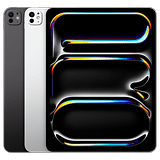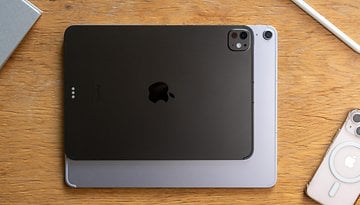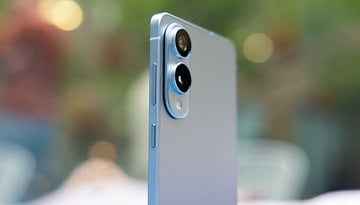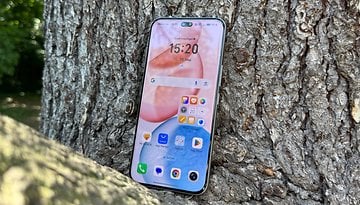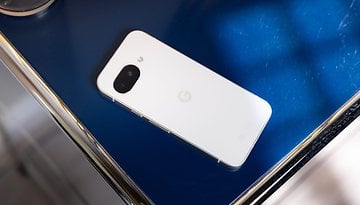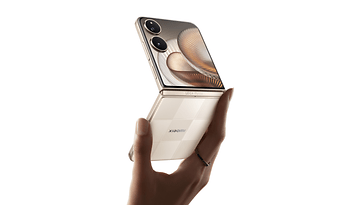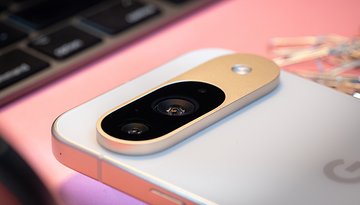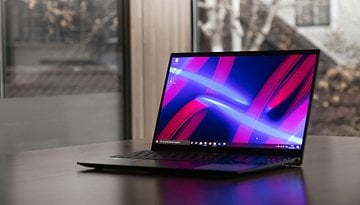iPad Pro 2024 Review: Thinnest iPad Ever Ready to Rule the World
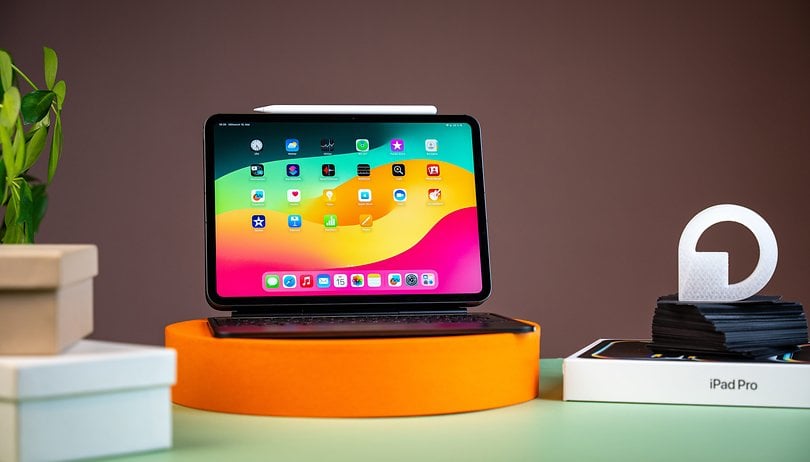

The Apple iPad Pro 2024 experienced a complete overhaul. The result is the thinnest Apple product ever—even thinner than the iPod nano. Over the past week, I put the iPad Pro 2024 through its paces. In many ways, the iPad has completely replaced my computer, but there are still a few things that take some getting used to. In our nextpit review, we explain what these points are, who the iPad Pro 2024 is suitable for, and who should stay away from it.
Good
- Sensational display
- Thin and light body
- Very good battery life
- Ultra-fast Apple M4 processor
Bad
- Expensive peripherals required for a PC-like experience
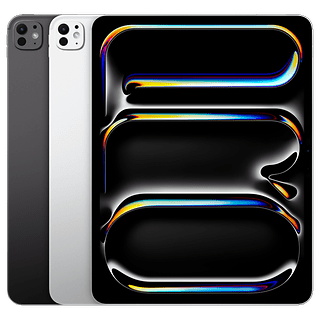
iPad Pro 2024 in a nutshell
Over the last three weeks, the iPad Pro has almost become my primary work device. I will repeat this mantra a few more times in this review: you can actually work with the iPad (unfortunately, iPadOS is often the limiting factor here) as if it were a normal PC most of the time. However, if you want to exploit the full potential, you will also need the Apple Pencil Pro and the Magic Keyboard, as well as a Thunderbolt cable alongside compatible adapters.
| iPad Pro 11" (2024) Wi-Fi |
iPad Pro 11" (2024) 5G |
iPad Pro 13" (2024) Wi-Fi |
iPad Pro 13" (2024) 5G |
|
|---|---|---|---|---|
| 256 GB | $999 | $1,199 | $1,299 | $1,499 |
| 512 GB | $1,199 | $1,399 | $1,499 | $1,699 |
| 1 TB | $1,599 | $1,799 | $1,899 | $2,099 |
| 2 TB | $1,999 | $2,199 | $2,299 | $2,399 |
The Apple Pencil Pro costs $129, the Magic Keyboard retails for $299 for 11-inch iPads, and $349 for 13-inch iPads. At the end of the day, it all adds up. If you want to use the iPad Pro as your only computer, you need to be sure that iPadOS fits your workflow perfectly.
The new flat design of the iPad Pro 2024 is impressive with some flaws
Apple has succeeded in creating a real eye-catcher with the new iPad Pro 2024. The front camera has finally been relocated to the right place. Unfortunately, this also features a serious disadvantage for consumers.
Pros:
- Nothing has changed at first glance.
- Upon closer inspection, you realize how thin and light the iPad has become.
- The front camera is finally where you would expect it to be.
Cons:
- The new front camera design means the old Apple Pencil can no longer be used.
It has been around a year and a half since Apple last updated its iPad Pro range. Although Apple mentioned that this year's revisions were the biggest refresh since the iPad has been around during its unveiling, the new design was not noticeable at first glance. When the iPad is switched off, you probably won't even notice where Apple made its changes.
The newly redesigned iPad Pro resulted in some remarkable changes. One overdue and important change is how the front camera has moved from the narrow side of the tablet to the top and wider area. Previously, conference calls with the iPad were only possible from weird angles. Those days are now over. I've even preferred to use the iPad for video conferencing in recent weeks. Of course, there is still Center Stage, the function where the iPad's camera follows you and keeps you in focus.

By the way, if you want to know how to activate the "Center Stage" function, we have an article for you here: How to activate automatic tracking on the iPad Pro
However, the new design has one major disadvantage.
The camera has finally been relocated to the supposedly correct position. You might ask yourself why Apple did take its own sweet time with this. The fact that Apple was not in a hurry is probably due to the fact their engineers had to redesign the entire iPad's interior. The reason for this? The charging device for the Apple Pencil which was previously located where the camera was is no longer available in this form.
As a result, all old Apple Pencils will no longer work with the new iPads Air and Pro. Conversely, the new Apple Pencil Pro is not compatible with older iPads, either. If you want to enjoy the new menu (also see the linked video in this article) which can be opened with the new squeeze function of the Apple Pro Pencils, you will have to buy one of the new iPads.
It doesn't get any thinner
If Apple's engineers have to get to work on the insides of this tablet, they have also dared to tackle the iPad chassis directly. The result? An extremely thin iPad. Apple even proudly mentioned it is the thinnest Apple product ever, making it even thinner than the iPod nano.
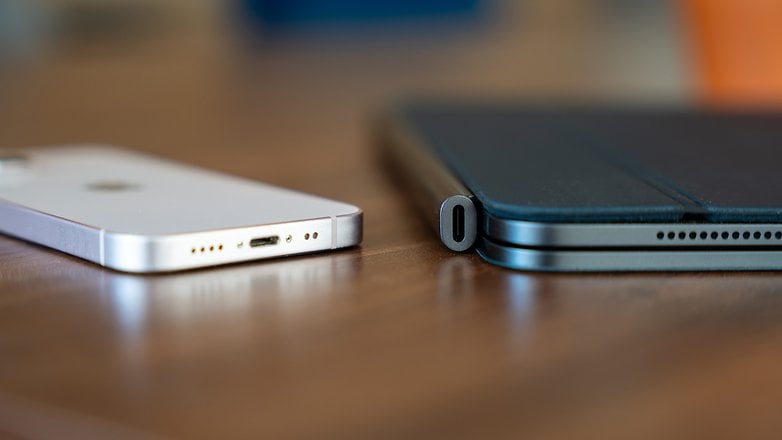
The small 11-inch iPad Pro measures just 5.3 mm thin and is an entire 0.6 mm thinner. As for the large 13-inch iPad, it is only 5.1 millimeters thick—or rather, thin.
Is it also robust, you ask? Here's a little history lesson: with the iPhone 6 Plus, the smartphone could bend if you had it in your back pocket. Those days are long gone. I performed the bend test. Admittedly, not with my absolute last ounce of strength. There was no chance of bending anything—although I can't think of any situation where an iPad could bend by accident at all.
Of course, the iPad Pro is not only thinner but also about as light as a large chocolate bar. This is particularly noticeable when holding it for longer periods. Compared to older iPads, it feels far more comfortable if you want to hold the tablet in your hand for a longer time, such as when watching a movie or surfing the Internet on the couch.
Apart from the fact that old Apple Pencils with magnets no longer work with the new tablets, Apple has taken a significant step forward with the new design.
How well does the iPad Pro 2024 perform? I placed the tablet in the hands of my colleague Ben, who used the new iPad to edit some 4K videos at 120 fps and tried to push the iPad Pro to its limits.
Better safe than sorry: the iPad Pro has two displays
The iPad Pro 2024 has not just one, but two displays. That sounds strange at first, but at second glance, it makes a lot of sense.
Pros:
- The new OLED of the iPad Pro is a real feast for the eyes.
- Crisp colors, bright display even under bright sunlight.
Cons:
- High-level nitpicking: I'm looking forward to the bezels getting thinner at some point.
Having one OLED display is good. Two OLED displays are better. However, don't worry: Apple wasn't interested in the principle of "Never mind! The main thing is having more!", but rather "a lot helps a lot". For the very first time, Apple is using an OLED display in an iPad, with two panels positioned exactly on top of each other.
Apple calls this technology "Tandem OLED", which is primarily intended to ensure a brighter screen. This means the iPad Pro panels should shine about twice as bright as a single OLED. Just for the sake of completeness: Apple calls its new displays Ultra Retina XDR.
The Ultra Retina XDR significantly enhances the iPad Pro. It has wonderful color reproduction, the hues are strong and rich and the black is really black compared to LCDs. My colleague Ben also shared with me that the new tandem OLED display is excellent for editing digital content. One of the reasons for this is Apple pays attention to high color fidelity in its displays. In addition, the iPad displays cover the large P3 color space and can also be calibrated a little more precisely in reference mode if required. Of course, the display also supports a dynamic refresh rate of up to 120 Hertz.
When I compare the iPad Pro display with my Studio Display, the differences are not that great, apart from the screen size, of course.
By the way, here is some good news for all outdoor workers: thanks to the excellent screen brightness, I was able to work outside in bright sunlight without any issues. Apple specified the maximum brightness at 1,600 nits for HDR content. Compared to my MacBook Pro, this is worlds apart. I regularly hit my limits here and have to look for a shaded spot to work in the fresh air. Alternatively, I can always dig out the iPad Pro.
If you do a lot of work outdoors with your iPad Pro, you can now have a nano-coating applied to the display. We are already familiar with this technology which reduces reflections in Apple's large monitors. One disadvantage? This option is only available in the 1 TB storage version.

Things you will have to live without in the future
Actually, I didn't want to write such a negative headline . Personally, I cannot understand Apple's decision to make do without certain features in the future, nor even approve such steps.
First, there is the iPad Pro's camera module which has not changed visually but has become smaller. Apple has done away with the ultra-wide angle camera this year. What remains is the 12 MP wide-angle camera and the LiDAR scanner to obtain depth information. I assumed Apple has analyzed the market and determined that nobody actually uses the iPad Pro to take photos.
Instead, the Truetone flash also now works adaptively and should be able to help scan documents better with the iPad.
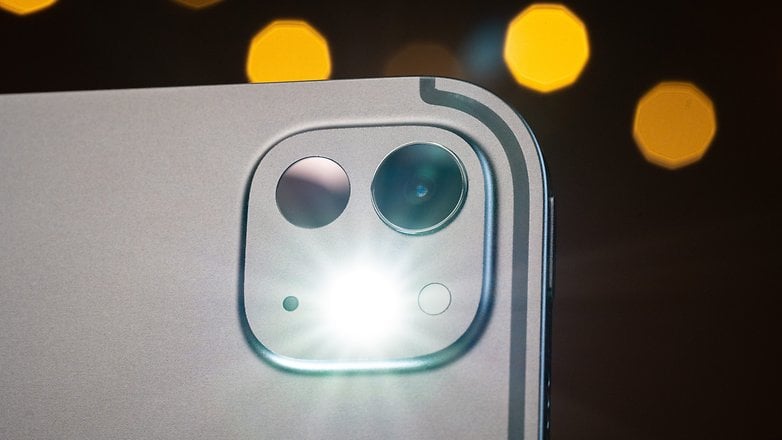
On the other hand, the SIM card slot has disappeared from the 5G models. I'll be honest: I love eSIM. Nothing is easier, faster, and provides peace of mind in this context. For those who tend to travel abroad or are tied to one of the mobile service providers who do not yet offer eSIMs, unboxing the new iPad Pro could be a sad afternoon.
There's something else missing: Apple recently did away with the familiar Apple stickers, a fact that many people will probably have to come to terms with. At the very least, you can still pick one from the Apple Store free of charge if you wish. However, the power adapter has now disappeared. Instead, only a USB-C cable is included. I would like to emphasize at this point that I explicitly approve of and support this. After all, I can no longer count the number of unused USB-C power adapters in my home but if you're not like me, you might be wide-eyed at first.
New accessories can do more and feel better in the hand
My headline is not quite accurate. The new Apple Pencil Pro doesn't look any different from its predecessor. Instead, it now offers haptic feedback when you squeeze it and opens a new menu in the Notes app, among other things. It is here you can select pens, colors, and other things quickly. There is also a new sensor that can detect when you turn the Pencil. This allows selected new functions to be displayed.
The new Magic Keyboard hasn't changed that much visually, either. The bend that makes the tablet "float" begins earlier and makes the iPad Pro stand a little straighter. What felt really cool? The new aluminum case. Unfortunately, this is only on the inside. Unfortunately, it is still covered with plastic on the outside. The touch panel also offers haptic feedback now. All in all, you get closer to an actual "MacBook" feeling when working with the iPad Pro.
One of the reasons for this is how Apple has finally integrated a row of function keys into the Magic Keyboard, which also comes with an escape key. That sounds unspectacular at first but those who are used to conventional keyboards will no longer have to get used to it. It is also a little more convenient to close dialog windows or programs at the touch of a button. This means you don't have to reach for the display and perform a swipe gesture.
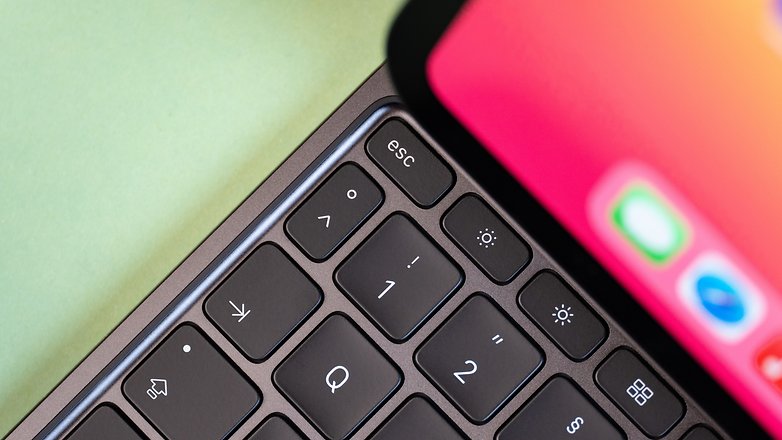
Performance and hardware
Apple used the unveiling of the iPad Pro 2024 to introduce a new SoC. The M4 SoC, which was manufactured using an optimized 3 nm process, makes the iPad Pro the fastest Apple device currently available if we were to solely focus on CPU performance. To challenge the performance of the compact tablet computer, we used it for video editing and image processing.
Pros:
- Extreme level of performance in a small form factor.
- No overheating issues.
- Excellent GPU performance.
Cons:
- 16 GB RAM option only with 1 TB or above storage model.
- Still misses out on Wi-Fi 7.
With the M4 SoC, Apple positioned the new iPad Pro as the new top performer in its lineup, at least based on the CPU performance. Apple's Silicon SoCs are now in the fourth generation iteration of the iPad, with nine or ten CPU cores as standard (dependent on the memory variant), ten GPU cores, and 16 NPU cores, which have been optimized to power AI applications locally on the device.
In Apple's hierarchy of devices, only the Pro, Max, and Ultra models all feature M chips, which primarily offer better graphics performance than the standard M4, which has been reserved for future MacBook and Mac models. However, if we were to look at the CPU performance in the benchmark, the new M4 SoC actually beats all previous chips from Apple.
Benchmark table
| Benchmark | iPad Pro 2024 M4 | iPad Air 2024 M2 | MacBook Air M3 | MacBook Pro M3 Pro | MacBook Pro M3 Max |
|---|---|---|---|---|---|
| Geekbench 6 CPU (Single / Multi) | 3,647 / 14,254 | 2,592 / 10,066 | 3,153 / 12,033 | 3,130 / 14,243 | 3,092 / 19,315 |
| Geekbench 6 GPU | 53.307 | 42,101 | 30,457 | 43,050 | 76,507 |
| 3D Mark Wild Life Extreme | 8,725 at 52.2 fps | 6,116 at 36.6 fps | n.a. | n.a. | n.a. |
| 3D Mark Wild Life Extreme stress test |
|
|
n.a. | n.a. | n.a. |
In the iPad Pro, which measures a mere 5.1 mm thin and has an 11-inch display, we obtain more CPU performance than in the MacBook Pro with M3 Max (review), which costs $3,499 and above, depending on the configuration. While this was to be expected, the GPU performance of the new system-on-a-chip is surprising compared to previous models.
In the Geekbench GPU benchmark, the M4 scored over 10,000 points more than the M3 Pro in the MacBook Pro, which was configured with 18 GB of RAM in the benchmark. The GPU performance of the M3 in the current MacBook Air (review) almost doubled.
However, the size of the RAM in Apple's silicon chips plays quite a decisive role when it comes to graphics performance. This is because as shared memory, it is used by both the CPU and GPU cores. At this point, it is therefore important to mention that our iPad Pro 2024 review unit came equipped with 16 GB of RAM thanks to 1 TB of internal memory. If you want to achieve a similar performance in the iPad Pro, you will have to opt for the 1 TB version, as Apple only offers the RAM upgrade from this configuration onwards.
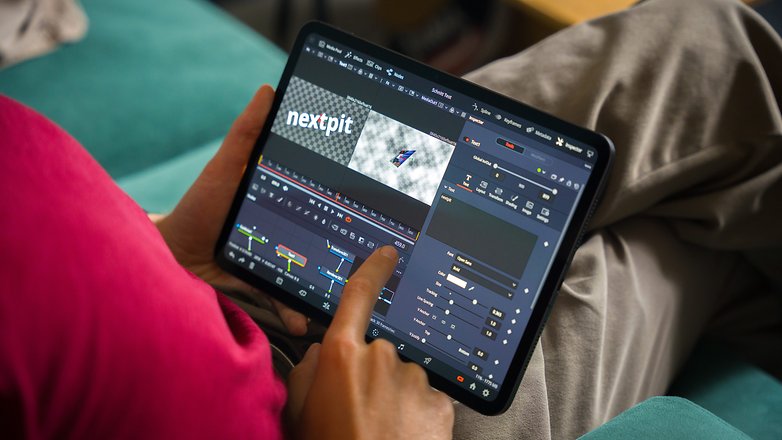
However, the benchmark results of the new iPad Pro are particularly impressive if we remember one thing: The hardware managed to chug alone without any active cooling and sits in a case that is just 5.1 mm thick and weighs just 444 g. In the Wild Life benchmark stress test, where a high-performance requirement is simulated for 20 runs, performance dropped by around 20 percent over a longer period. Without active cooling, this is a decent enough performance. Although the iPad Pro does get noticeably warm, the temperatures do not reach critical levels.
These values, which can theoretically be achieved based on the benchmark, are also beneficial when working with the iPad Pro 2024. I edited images on the iPad Pro and stitched videos with the Davinci Resolve (for iPad), where the program had to render graphics and 3D elements in addition to performing "normal" video editing. The source material was available in 4K at 200 Mbit/s with 120 frames per second in 10-bit color depth with a 4:2:2 color subsampling.
What can I say? I was able to edit a 15-minute test video where I integrated 3D animations with lettering and other video material without any stuttering or lag. It's particularly impressive that I set the timeline preview to 4K right from the start and didn't create any proxy files. This meant the iPad Pro always had to process the complete video files and display them in full resolution as a preview. Rendering the video then took around 19 minutes, which experience has shown, also equals to very good performance.
When editing videos, I was always confused by the fact that I was holding an 11-inch tablet and not a fully-fledged video editing computer. The battery capacity dropped by just under 15 percent during around 45 minutes of video editing work, but let's not get carried away first as we'll talk more about the battery efficiency of the M4 later.
Finally, two or three words from me about the general technology used in the iPad Pro. Apple integrated a 5G module in the iPad upon request, which relies strictly on eSIMs. Wi-Fi 6E and Bluetooth 5.3 are also part of the deal. I would like to see support for Wi-Fi 7 in the next model. However, the fact that Apple has integrated USB-C with Thunderbolt 4 compared to the iPad Air 2024 means the iPad Pro can be hooked up to a USB-C monitor is a consolation.
Overall, Apple flexes more muscles in the iPad Pro 2024 than would be theoretically possible in an 11-inch tablet. However, with the upcoming market availability of the Snapdragon X Elite, it may not be a bad tactical decision to debut the extremely powerful M4 SoC on the iPad. The iPad Pro does one thing above all: it whets the appetite for the next generation of processors. Over to you, Fabi!
Battery life
The new M4 is supposed to deliver a lot more performance per watt. Despite this, Apple stated the battery life is only 10 hours, leaving it unchanged from the previous model. In my review, however, I came up with completely different values.
Pros:
- More than 13 hours of battery life. What more can you ask for?
Cons:
- -
Apple is not exactly known for understating matters. Superlatives and Apple are BFFs. Hence, I was amazed the battery life turned out to be more than 30 percent better than what Apple claimed. Instead of the stated 10 hours, I eked out around 13 hours of battery life before the Apple tablet's battery died.
Conclusion: Completely over the top for me. But unfortunately so cool.
I'll be honest. I'll probably never be able to take advantage of the full power of the M4 chip. Although I connected the iPad to my Studio Display via Thunderbolt (which is only possible with the Pro version) today and was able to work as though I was on a Mac, the power that the iPad Pro offers me is almost like feeding pigs with French cuisine.
- While we're talking about iPads: All iPads compared
I mean that in the very best sense, by the way. Of course, it's reassuring to know that I could also use the iPad Pro to carry out complicated and computationally intensive video editing. The fact is, however, in the end, I preferred to work with my stationary Mac at my fixed workstation.
Despite that, I've been traveling almost exclusively with an iPad Pro in tow for several years now. The tablet is superior to a laptop in so many ways when traveling: I open it and it's ready to go! The internet is connected, I can type on the keyboard or navigate with my fingers. It has an impressive battery life and allows me to focus completely on what I'm doing.
I actually used the new iPad Pro even more intensively and preferred it over its predecessors. This is mainly due to the new position of the front camera, which simply made video conferencing so much easier. The noticeably improved battery life and the great display also play their part.
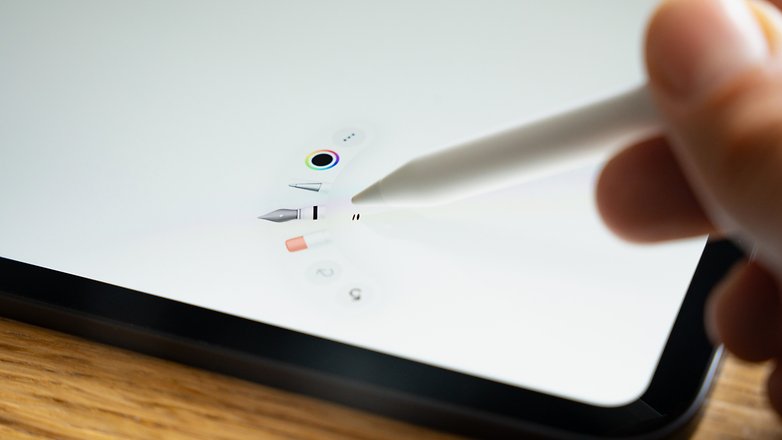
Here we are at the end of the review, and the Achilles heel of the iPad Pro is revealed. When fully equipped, it costs as much as a fully-fledged computer and delivers the same degree of performance. However, the often bulky iPadOS is likely to take the joy out of daily work for many people. Please don't get me wrong here. You can do virtually everything with an iPad Pro that you can do with a Mac. Unfortunately, it just doesn't feel quite as comfortable.
In the end, my conclusion is this: the iPad Pro feels like a MacBook, but for most people, it won't feel like one when working. That's a question of habit. If you were to ask my daughter Mia, she would say the opposite. For four years, the iPad Pro has been her only computer, which she uses to do everything for school and A-levels.
She doesn't miss anything and I understand her. However, others won't be able to live without a desktop or a laptop. Unfortunately, iPadOS is simply not made for that. By the way, half a star was deducted for the fact that iPadOS is sometimes too clunky to use. Otherwise, the iPad Pro 2024 would have earned a full five stars.
Nevertheless, the iPad Pro has won me over more this year than it has for a long time. It has become so pleasantly light and thin and the new display in particular makes a huge difference.
So which model should you buy if you want an Apple tablet? If you are looking for a tablet for the toilet, couch, and bed, as well as for simple work, then I highly recommend the normal iPad. If you want a powerful iPad that's like an extended, mobile workbench for your normal workplace when you're traveling, then the iPad Air is perfect. If you are a photographer, content creator, or videographer, then the iPad Pro is the ideal choice.
- Here is the Apple iPad Air 2024 review
Only one thing, though. In the end, the iPad Pro feels so cool that I personally would have let my gut and not my head decide in the end. Not cool at all!
If we were to bump into each other on the train at some point, don't be surprised to see an iPad Pro in front of me!
